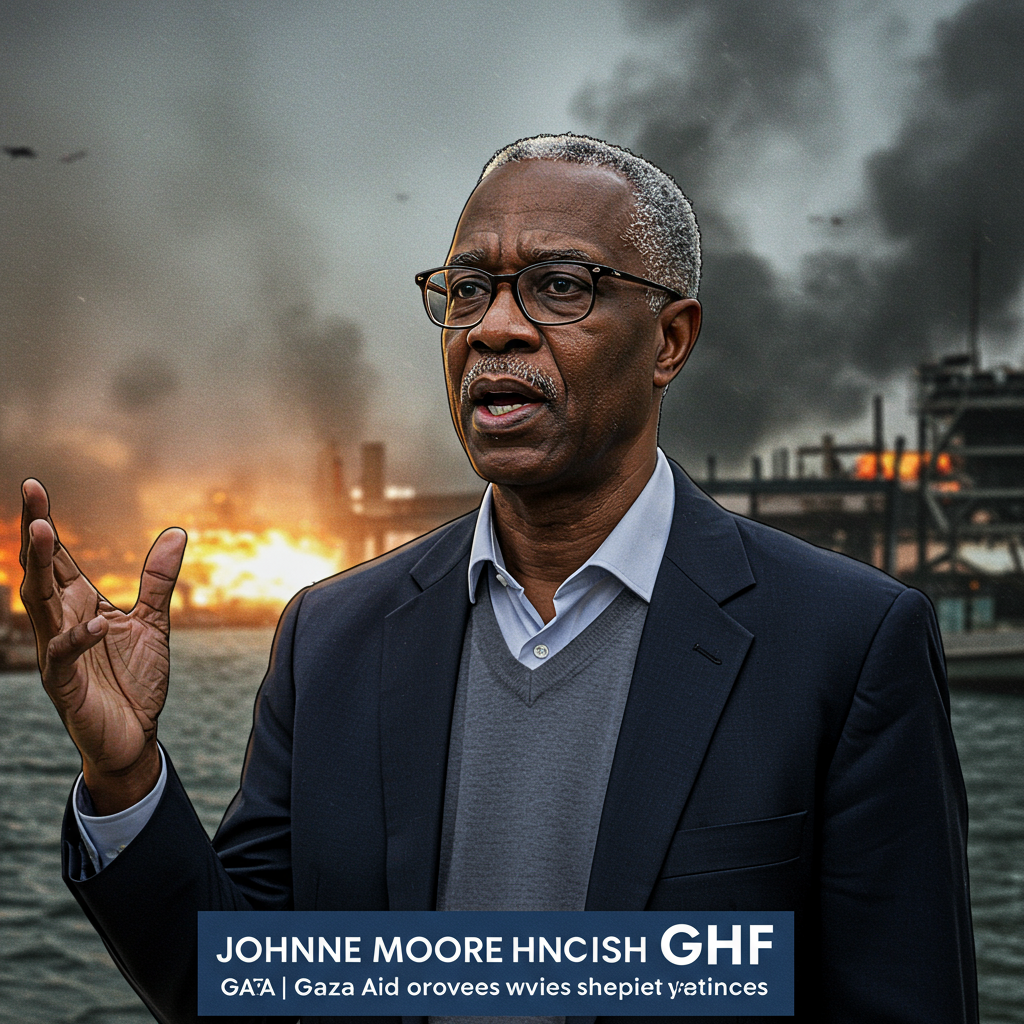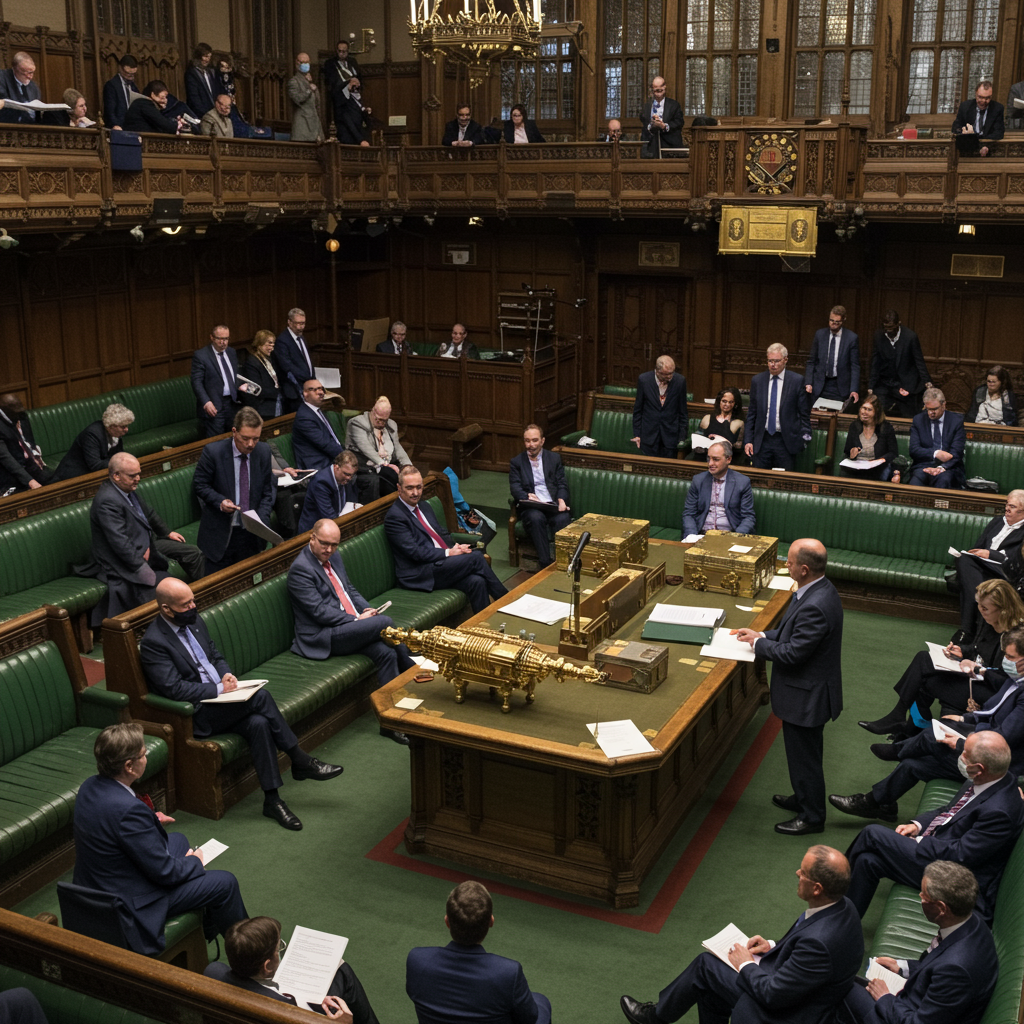The head of a controversial aid group operating in Gaza has mounted a defense of its work following widespread reports of deaths and injuries among Palestinians attempting to reach aid distribution sites. The Gaza Humanitarian Foundation (GHF), an organization described as US and Israeli-backed, took over aspects of aid distribution in late May, quickly drawing intense scrutiny.
Defense Amidst Mounting Casualties
Johnnie Moore, the head of the GHF, spoke out on the BBC World Service, acknowledging that deaths have occurred near aid sites. However, he contested the assertion that “100% of those casualties are being attributed to close proximity to GHF,” calling that claim “not true.” Moore also pushed back against attributing all deaths solely to Israeli forces, stating, “as best as we can tell that’s also not true.”
He accused the United Nations and other international organizations of circulating information they could not independently verify. Moore maintained that the GHF investigates incidents but often finds no evidence of anything happening directly near their sites, dismissing reports of fatalities near GHF locations as “disinformation.”
Condemnation from Aid Community
Moore’s defense comes as the GHF aid system faces strong condemnation from established UN agencies and humanitarian groups. UN Secretary-General Antonio Guterres branded the GHF operation “inherently unsafe.” He stressed that “Any operation that channels desperate civilians into militarized zones is inherently unsafe. The search for food must never be a death sentence.”
Aid organizations have largely refused to cooperate with the GHF, citing fundamental humanitarian principles of neutrality, impartiality, and independence. Philippe Lazzarini, the head of the UN agency for Palestinian refugees (UNRWA), particularly condemned the GHF system, calling it “lame, medieval and lethal” and asserting that “Inviting starving people to their death is a war crime.”
Reports of Deaths Near Distribution Points
According to the Hamas-run health ministry in Gaza, more than 500 Palestinians have been killed and over 4,000 injured while seeking aid since GHF operations began. Within days of starting in late May, incidents on June 1 and 3 resulted in dozens of deaths and sparked international outcry.
Alarming reports of fatalities near GHF sites, often situated inside Israeli military zones, have continued almost daily. Specific incidents cited by rescuers and medics include deaths among aid seekers on June 18, as well as tragic events in Khan Younis (where UN partner organizations reported over 60 deaths) and on Rashid Street near Gaza City (reporting seven deaths) in the days prior.
Eyewitnesses and medical personnel have repeatedly reported Israeli forces opening fire on crowds gathered near aid points. Further controversy arose from a Haaretz newspaper report citing unnamed IDF soldiers who claimed orders to shoot at unarmed civilians near aid sites to disperse them – allegations vehemently denied by Israeli Prime Minister Benjamin Netanyahu as “malicious falsehoods” and by the IDF. The IDF stated it does not instruct forces to deliberately shoot civilians near aid centers, adding that they are improving “operational response” in aid areas and have used “warning shots” against individuals perceived as threats.
Context and Criticisms
Critics point to the GHF’s structure and leadership as contributing to the controversy. GHF reportedly uses armed American private contractors for distribution, a departure from standard humanitarian practices. Furthermore, the profile of Johnnie Moore, known for roles as a preacher, PR executive, and former advisor to Donald Trump, has been highlighted, with some questioning his direct experience in complex, volatile aid distribution environments like Gaza.
These concerns were seemingly echoed internally, as GHF’s Executive Director, Jake Wood, reportedly resigned, citing the organization’s inability to adhere to core humanitarian principles. A Palestinian Christian scholar sharply criticized the GHF project, suggesting it is more focused on “public relations” than effective relief, describing it as “nothing more than mercenaries distributing aid,” and calling it a “politically motivated project” linked to efforts to bypass the UN. A former advisor in the Israeli military body overseeing Gaza aid has also expressed doubts about GHF data and suggested the project might be primarily for “public relations.” The head of UN relief has commented on the “horrifying scenes of Palestinians being shot, wounded or killed in Gaza while simply trying to eat.”
Moore himself raised separate allegations, claiming that the majority of UN aid trucks were being hijacked at gunpoint before GHF’s involvement. The UN has denied evidence of large-scale hijacking, a denial Moore dismissed as the “UN is not being honest.”
Challenges and the Road Ahead
Despite GHF’s goal to reach 50 million meals provided, Moore admitted the operation remained “insufficient” in getting food to those most in need. This reflects broader warnings from experts that Gaza remains on the brink of famine, despite Israel partially easing a blockade. The volume of aid entering the territory is still considered inadequate. Moore expressed the GHF’s need to scale up and willingness to collaborate with organizations like the UN, reiterating their mission: “We just want to feed Gazans.”
The GHF recently received $30 million in funding from the US State Department, marking the first known direct US contribution to the group.
The humanitarian crisis unfolds within the larger context of the conflict triggered by the October 7, 2023 Hamas attack on Israel. Since the start of the Israeli military campaign in Gaza, the Hamas-run health ministry reports more than 56,000 people have been killed in the territory. The desperate need for aid has led people to take immense risks, including attempting to access supplies still in transit, further highlighting the severity of the situation.




